After a summer in France, Saira reflects on how a Slow Ways style walking network in cities across Europe could bring benefits to residents and travellers alike as she readies herself for a life change
I’ve spent the last two months alone in Marseille, the oldest city in France, and one of Europe’s oldest continuously inhabited settlements. An ‘outsider’ city, Marseille is chaotic, colourful, wildly beautiful and often misrepresented. My intention for coming here was largely to write (that, and I didn’t have anywhere to stay over the summer). Woefully I’ve barely put pen to paper while I’ve been here apart from scribbling the odd journal entry and story draft.
When I’m not working, I spend most of my time walking — connecting areas and neighbourhoods by foot. From affluent Endoume, colourful Cours Julian to edgy Belle De Mai, each neighbourhood is a different world with its own unique character. I feel like I’m trialling my very own Slow Ways network — Slow Ways Marseille.
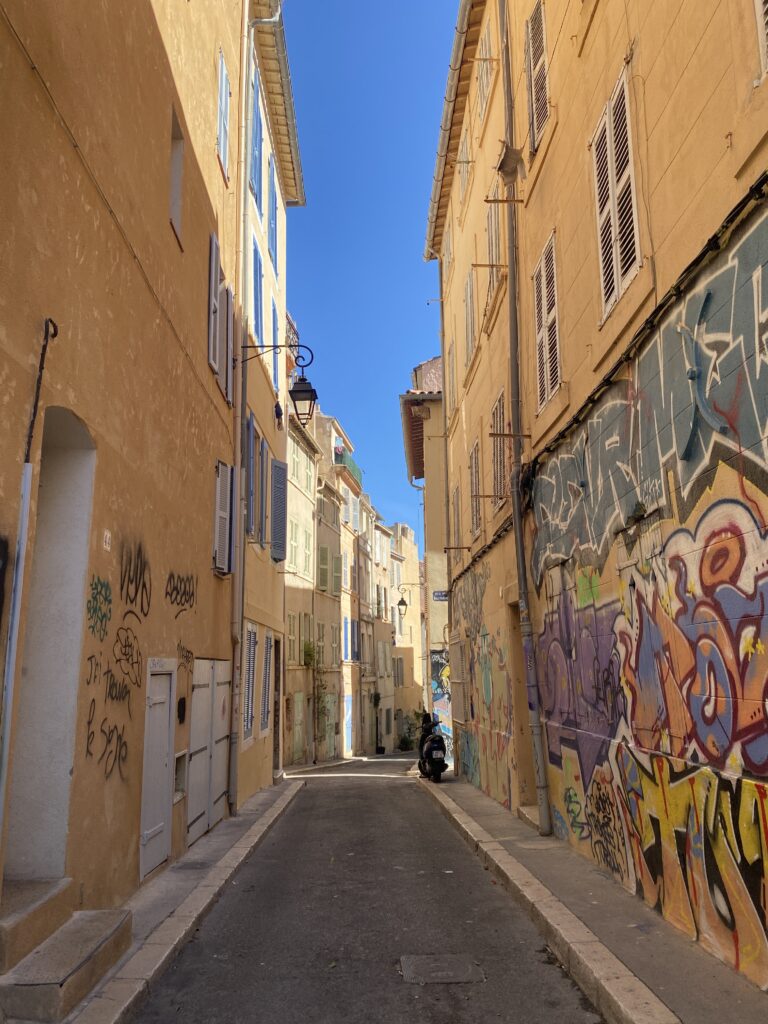
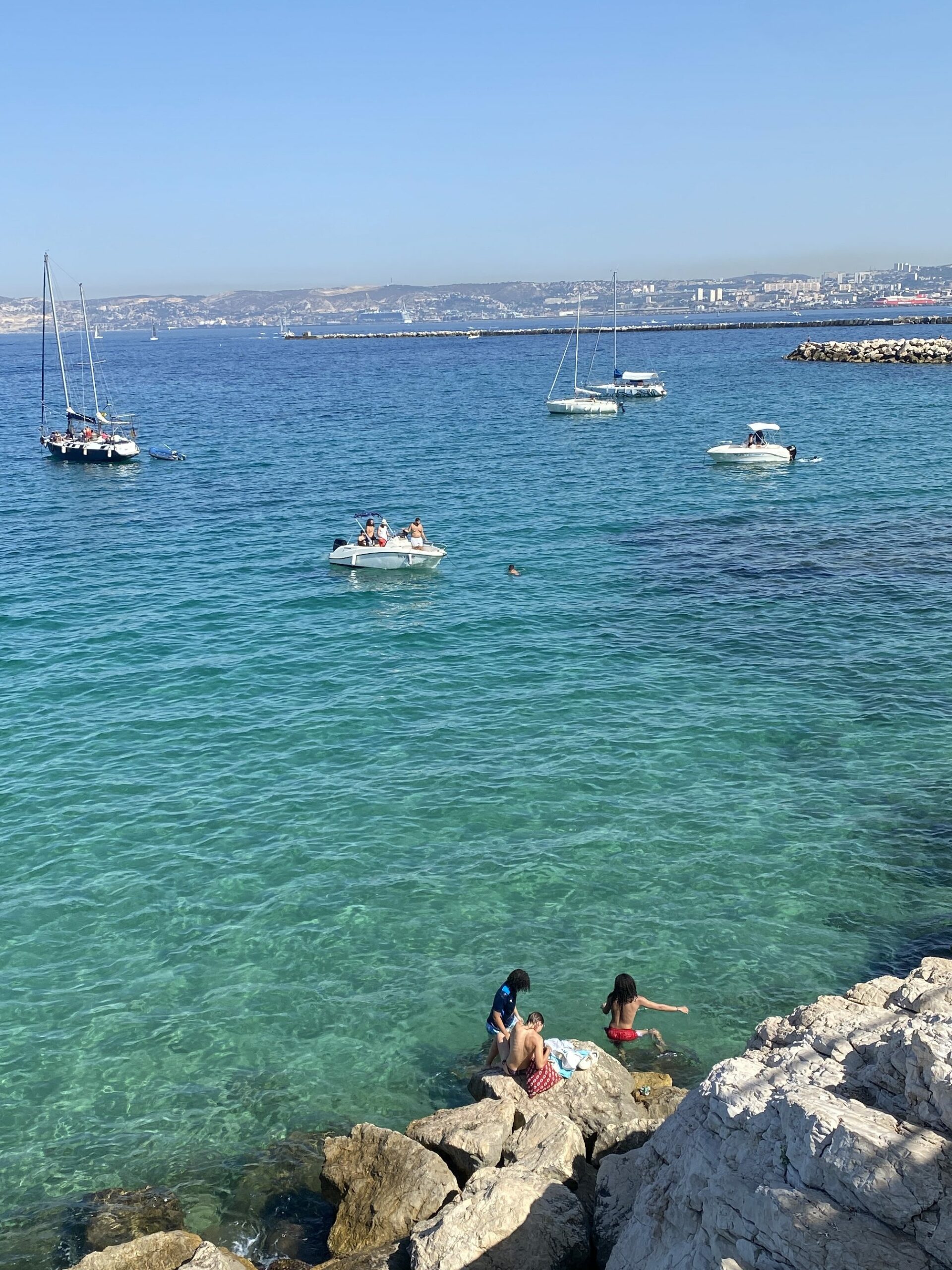
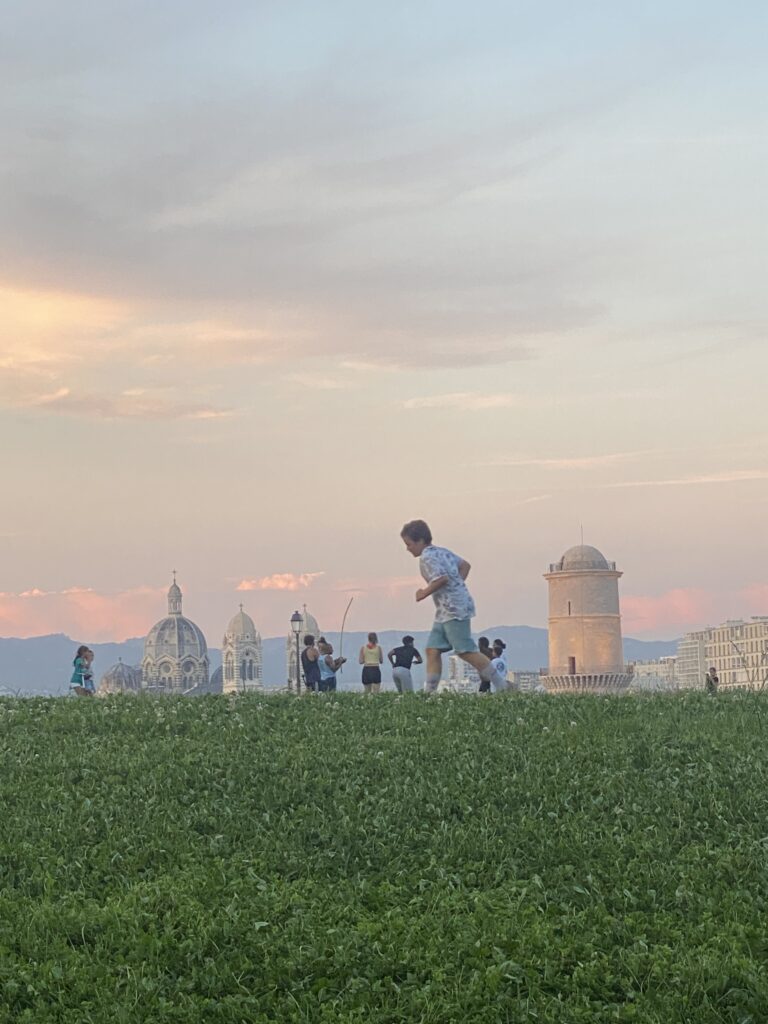
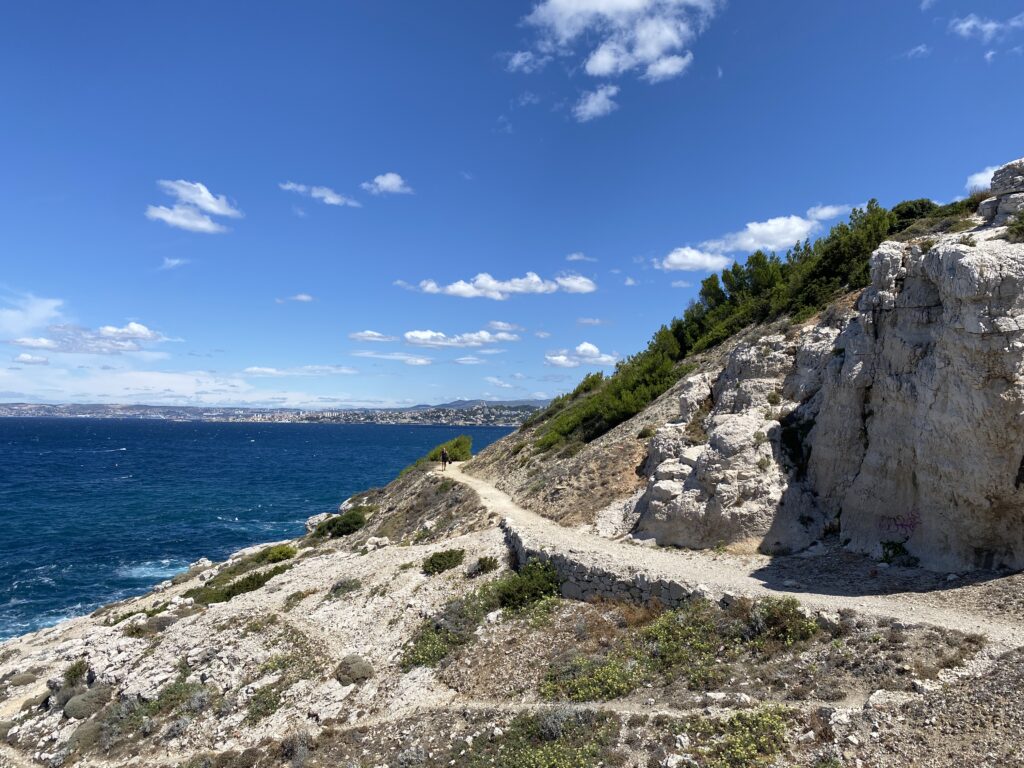
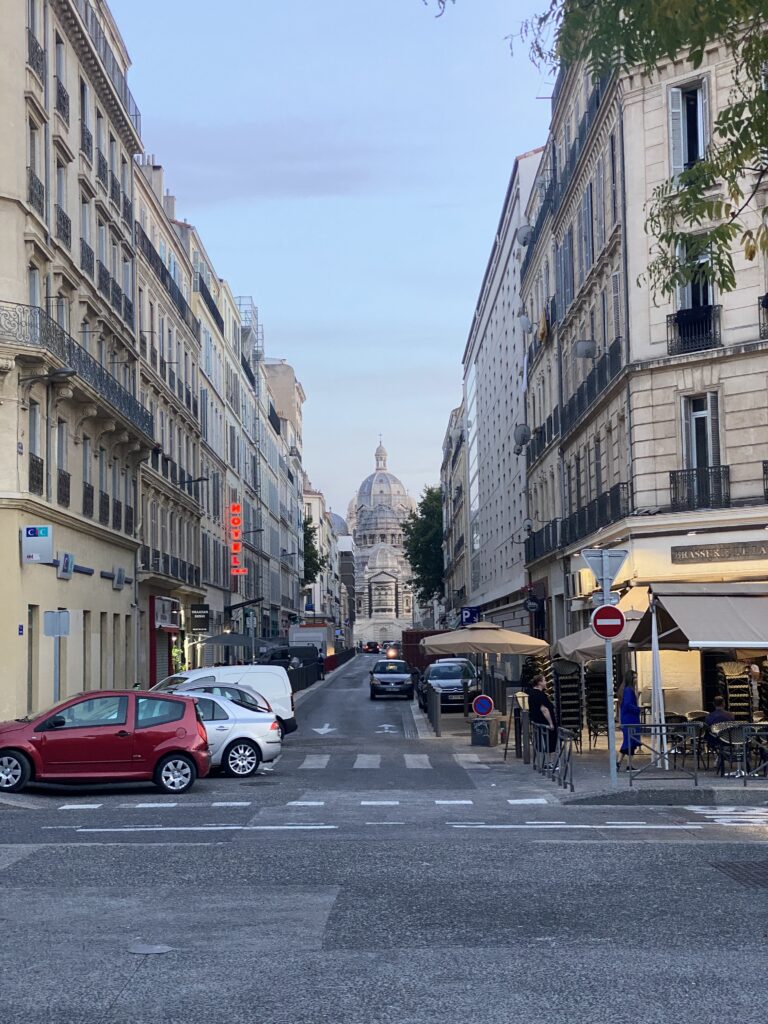
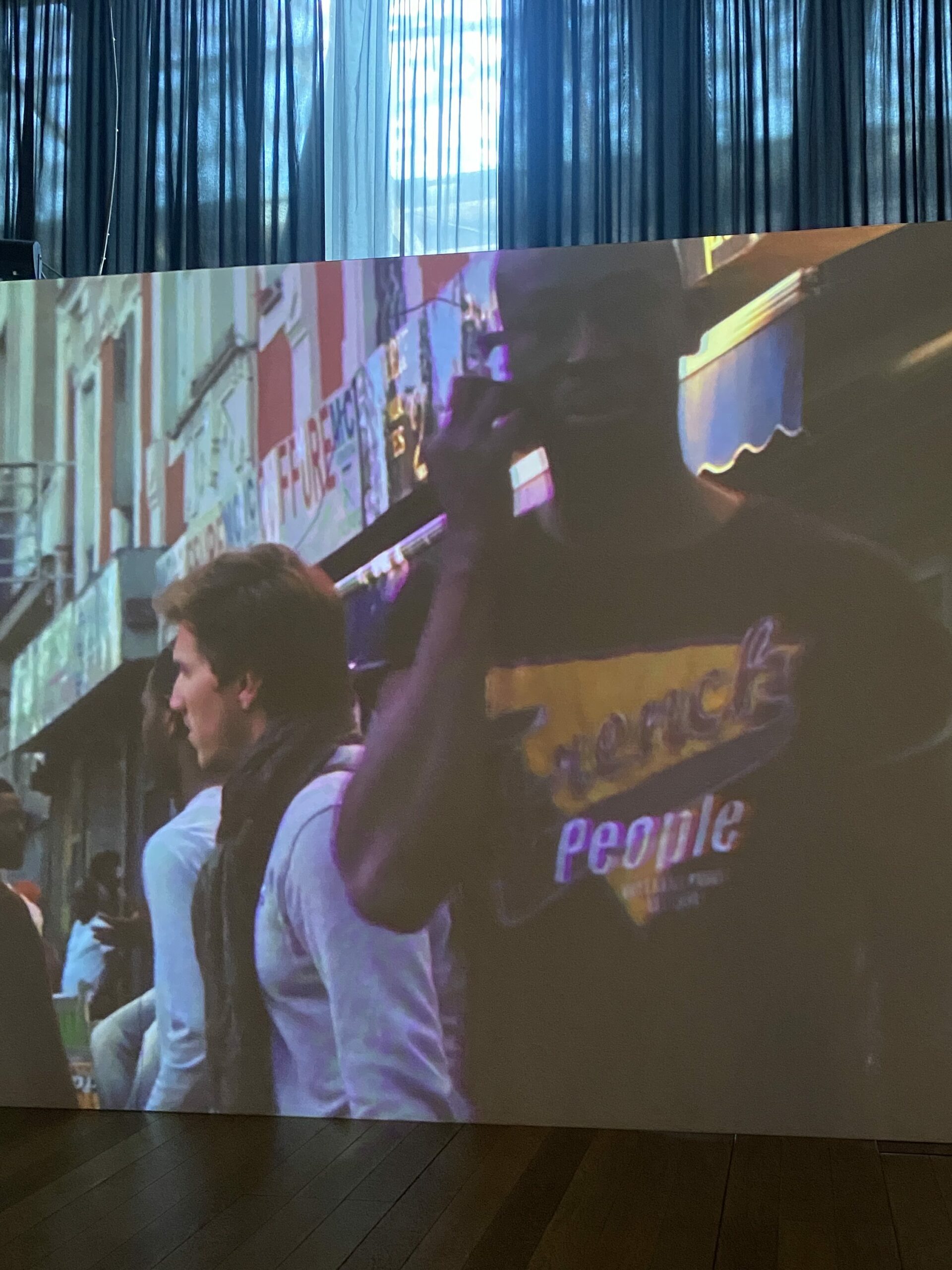
From Marseille locals, I’ve discovered lesser-known off-road paths, wondrous pastel streets lined with trees and potted plants to grittier back roads, where the buildings are dilapidated, and people bathe in makeshift paddling pools plonked onto open public squares. Marseille is full of unexpected surprises. The people here are warm, resourceful and fiercely proud. Its troubled history is riddled with complexity. It’s a place of both extreme wealth and extreme poverty, and unlike in Paris, everyone lives side by side.
Exploring the city by foot
On my hikes across the city, I’ve wandered through flea markets, cultural centres, public squares, museums, supermarkets, shopping centres, boulangeries, cinemas, parks and cemeteries. I’ve walked in and out of churches and mosques, past beauty salons and barbershops. I’ve gazed at the ever-changing street art near Marché de la Plaine (by morning a market, by evening a skate park) and the quirky shops in the narrow light-drenched streets of Le Panier (the old city). I’ve stopped off at North African tea shops, West African eateries, Afghani, Pakistani and Vietnamese takeouts.
I’ve walked out of the city centre and into the rugged Calanques National Park
I’ve spent breezy mornings swimming in the sea alongside fish and hot afternoons in the Bibliothèque l’Alcazar reading books. I’ve walked out of the city centre and into the rugged Calanques National Park. I’ve gotten the first boat to Frioul island, together with a few local workers and fisherman. I’ve watched countless sunsets from outside Basilique Notre-Dame-de-la-Garde, a high peak overlooking the city, from the small fishing villages of Vallon Des Auffes and Malmousque and the old port where locals gather.
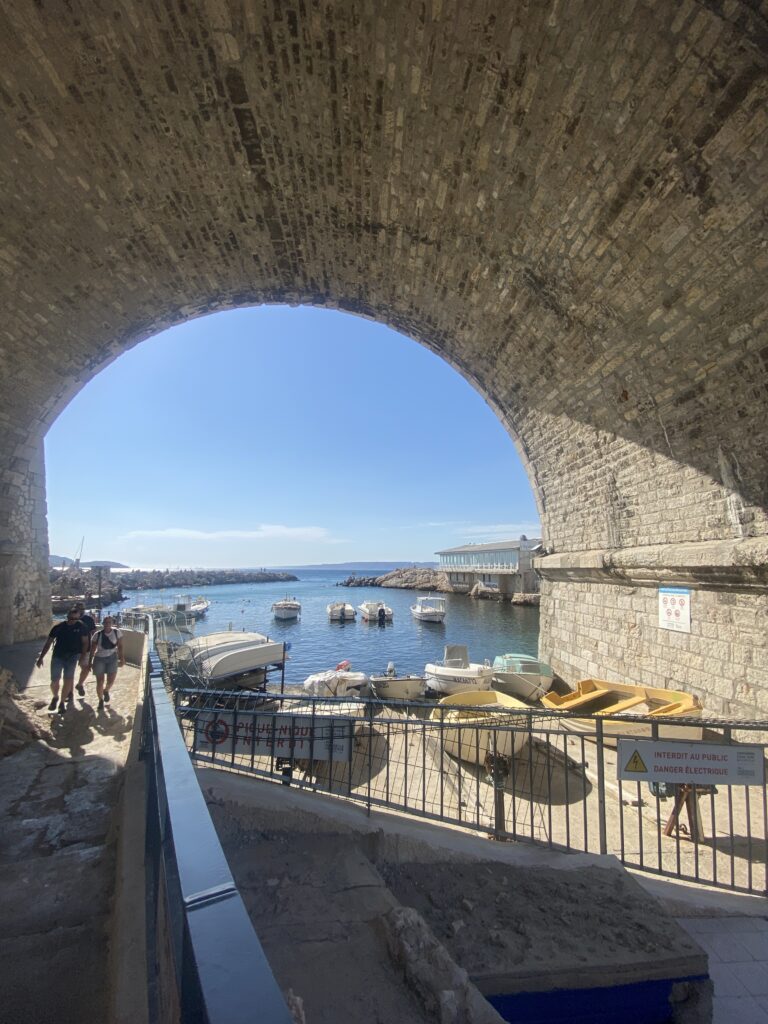
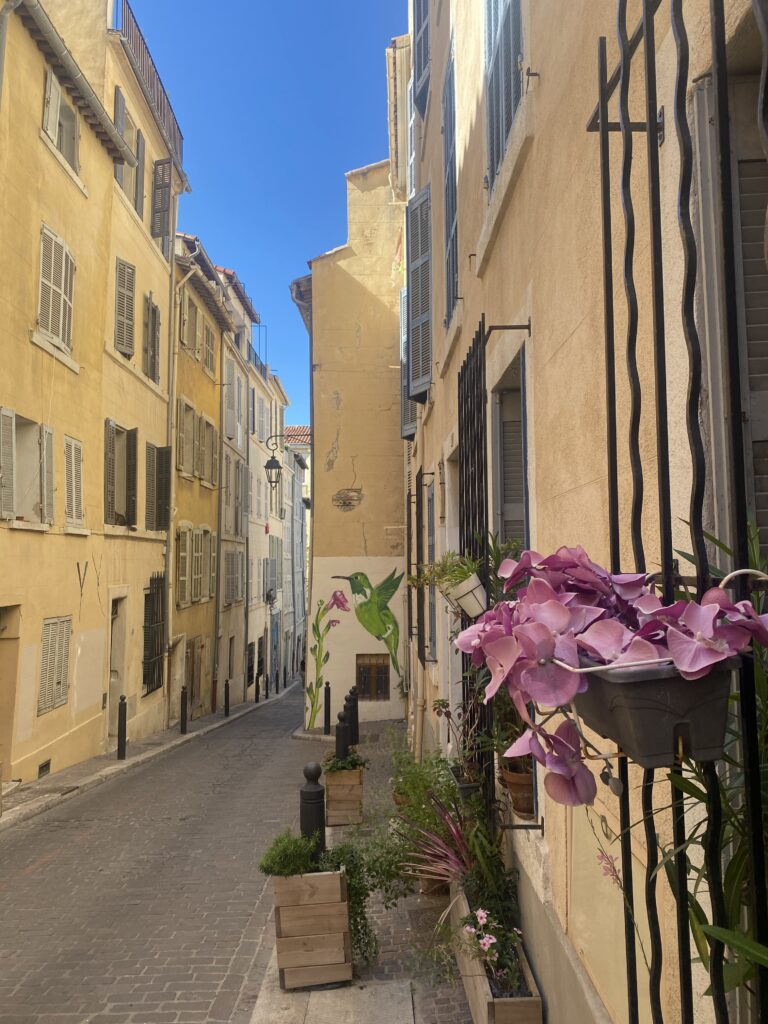
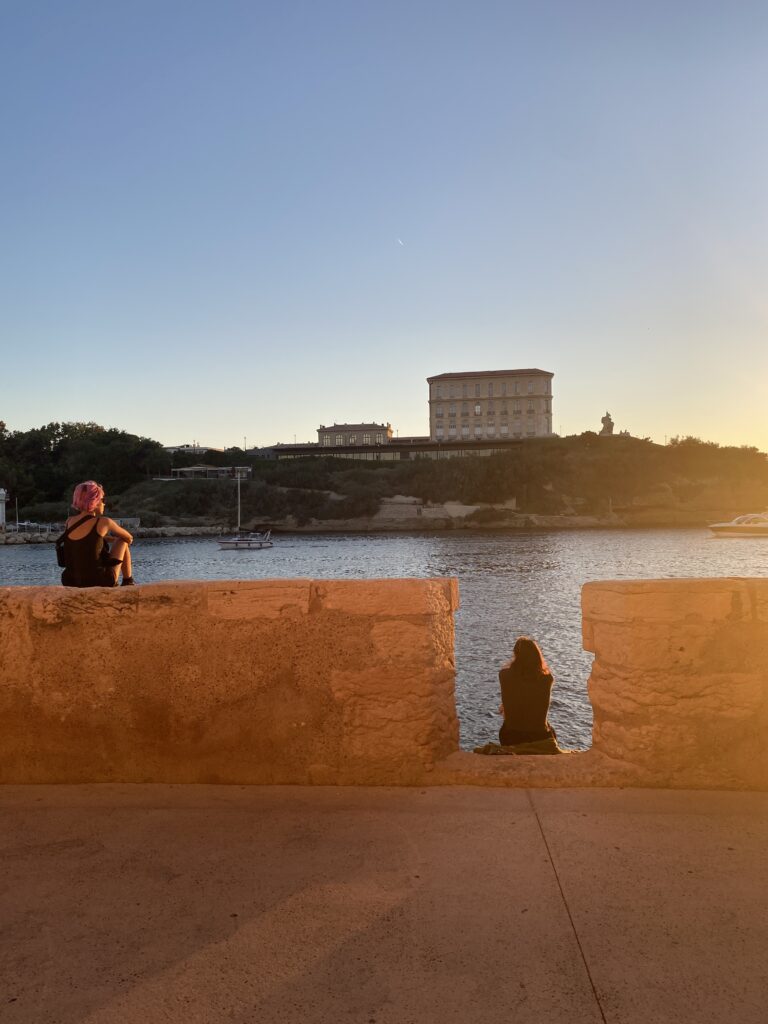
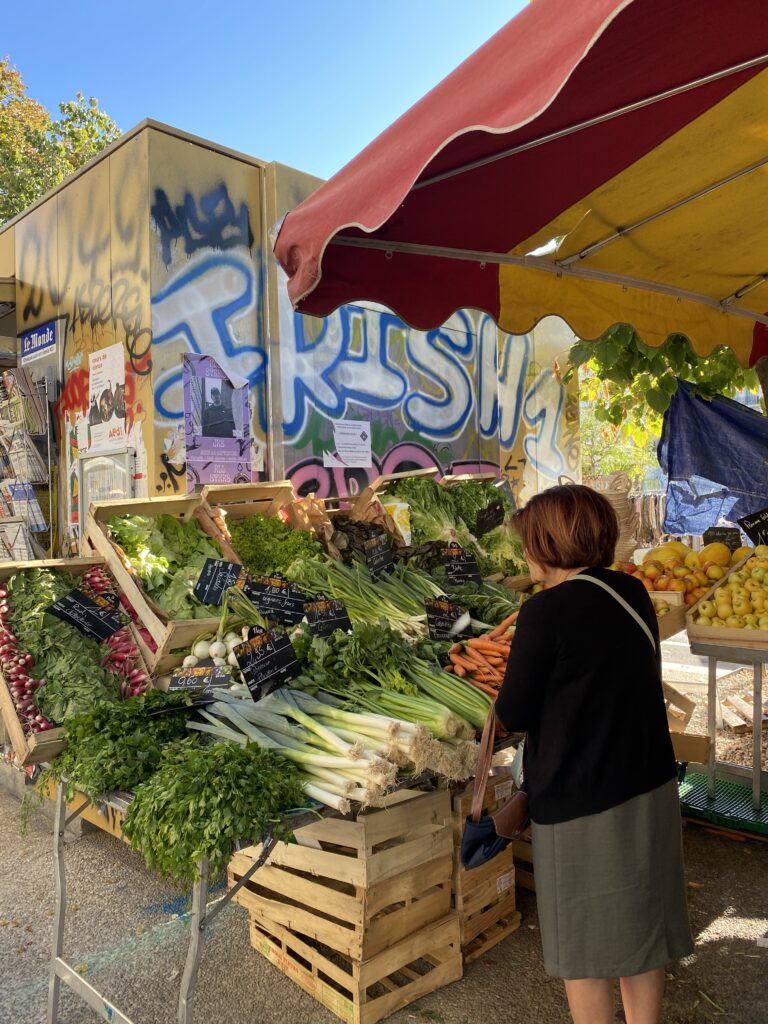
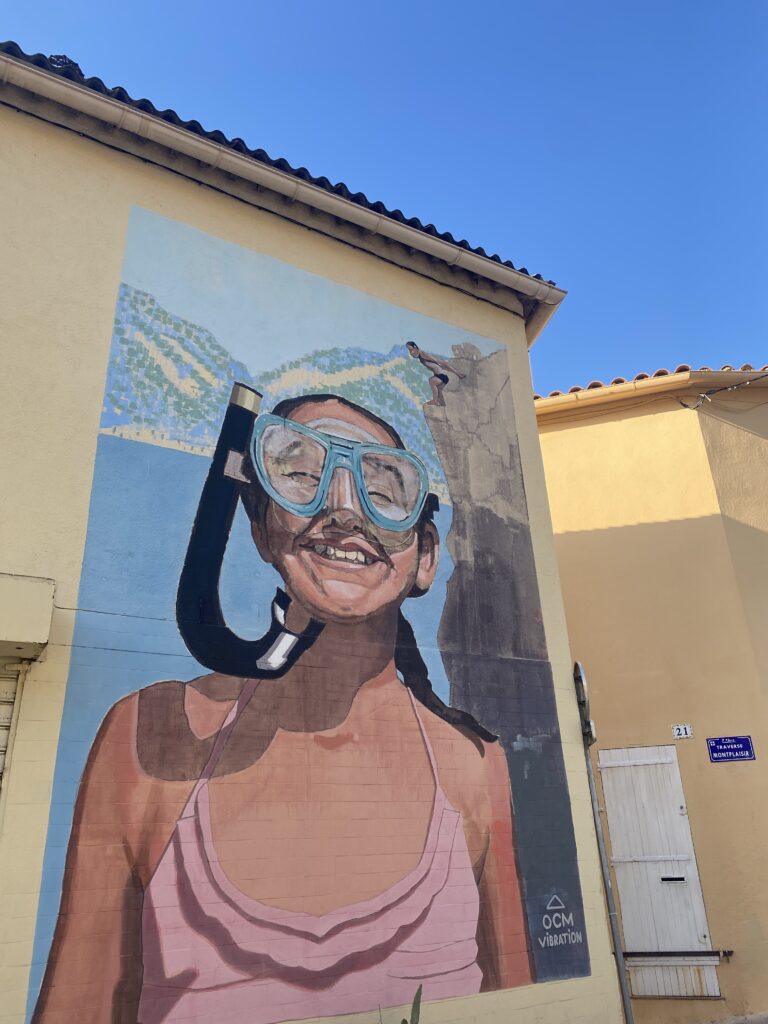
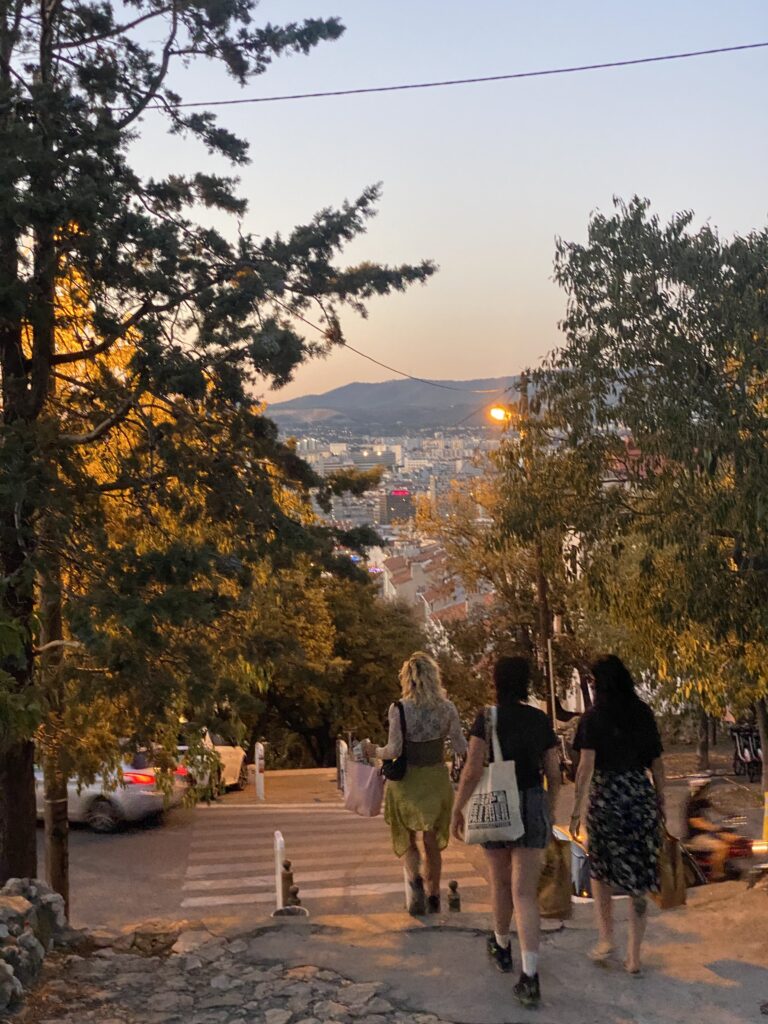
Slow Ways has changed the way I approach travel. Although I’ve long been used to taking lesser-known paths, I feel like my ramblings now are as purposeful as they are aimless. I’m walking to make connections (real and imaginary), to make new discoveries, to get out of my head, to meet new people and to learn. I’m walking for health, for wellbeing, for creativity, for climate, for joy, for all the things Dan is forever talking about.
A local guide tells me it’s a city made up of villages, and that many areas are only accessible by foot, bike and car
A walking network
Slow Ways feels more relevant here in some ways than it does in my home city of London. In Marseille, large swathes of the city remain unconnected, through gaps in public transport. There are only two metro lines. The buses are often packed. A local guide tells me it’s a city made up of villages, and that many areas are only accessible by foot, bike or car. There are electric bikes and scooters widely available for hire.
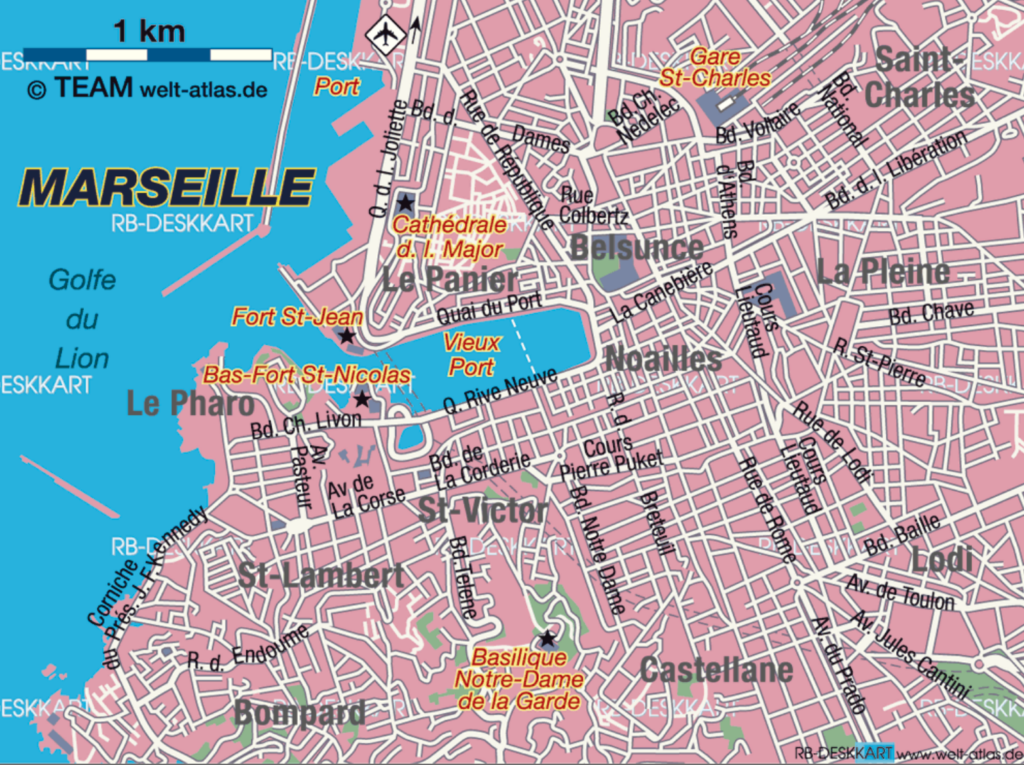
Photo: Map of the city centre by Welt Altlas
It’s a very walkable city; the main strip leading to the port is mostly pedestrianised. It’s also a joyful place to walk. The streets are always buzzing. It’s a melting pot of people, of cultures, subcultures, faith, fashion, football and hip-hop. There’s so much going on that walking in the city centre is never boring. It never feels like dead time.
However, there are barriers. Marseille isn’t a very accessible city. It’s hilly, there are stairs everywhere, all over the city. Some sidewalks are very skinnny. Summers are hot; some days it’s over 35 degrees. Walking long distances, especially in the middle of the day, isn’t practical. Some areas feel sketchy to walk in, with people injecting heroin in daylight and others yelling into an abyss. There are overflowing bins, scatterings of glass and dog poo. A lot of dog poo.
For a traveller, traversing routes created by locals, might prove the best way to get under the skin of a place
No city is without its problems. Every city could benefit from being better connected. For a traveller, traversing routes created by locals, might prove the best way to get under the skin of a place. To really get to know somewhere. I can see Slow Ways walking travel-guides really taking off — created for the people by the people. No one knows a settlement better than its residents.
Connecting people and places
A month into my trip, I re-downloaded the CouchSurfing app, a community travel app through which you can meet and stay with locals all over the world. I used it in a distant pre-pandemic past. I was surprised to find it was still thriving. Sometimes I would use the ‘hangout’ function to connect with strangers in the city and go for walks. Through the app I met a number of interesting people, life-long Marseille residents, new settlers and those passing through. I made friends with individuals from backgrounds vastly different to my own. Often we’d walk together, and as we walked we’d share stories, laughter, and our reflections. I got to know the city from the people I met, as much as I did the places that I went. I built a picture in my head of an interconnected network, partly owing to these shared walks (imagine a global Slow Ways social app for walkers to meet and self-organise in the future – how cool would that be!)
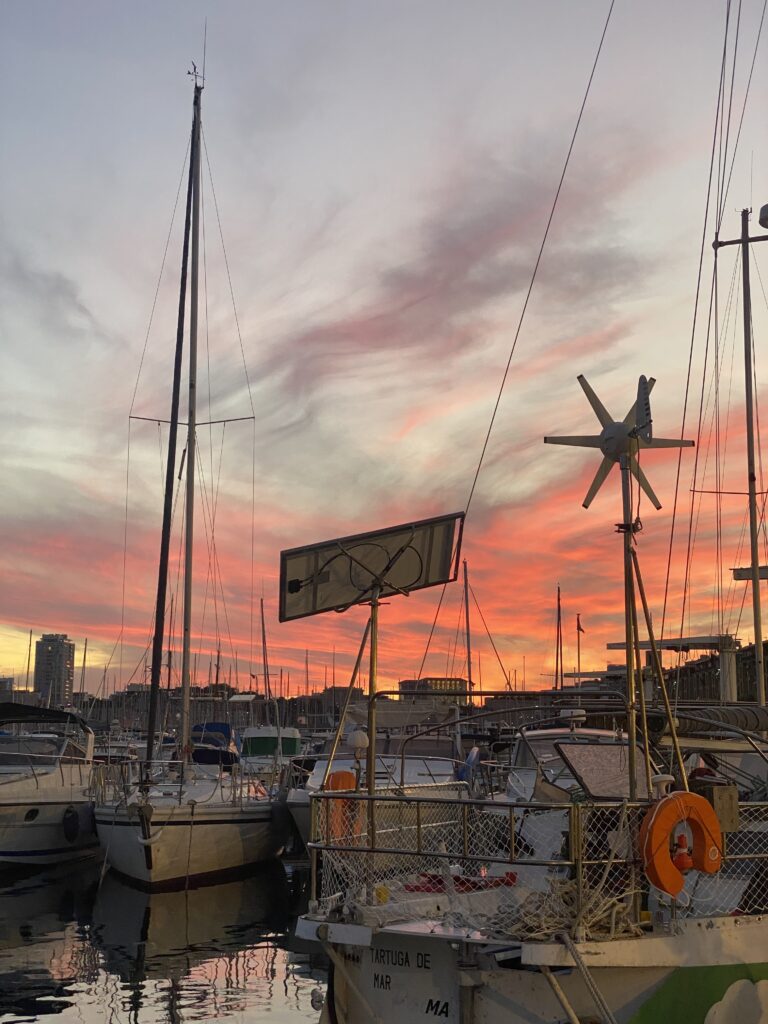
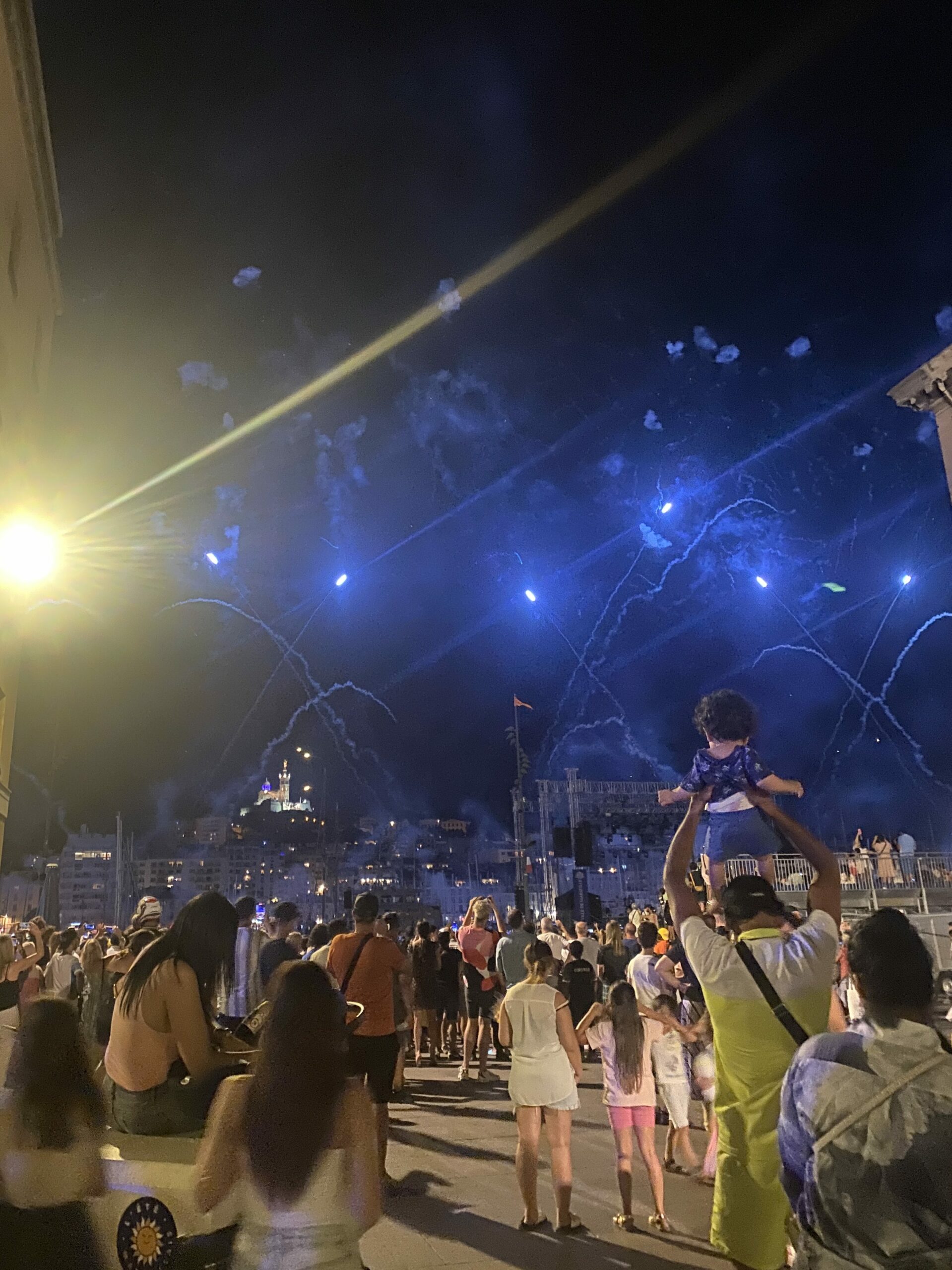
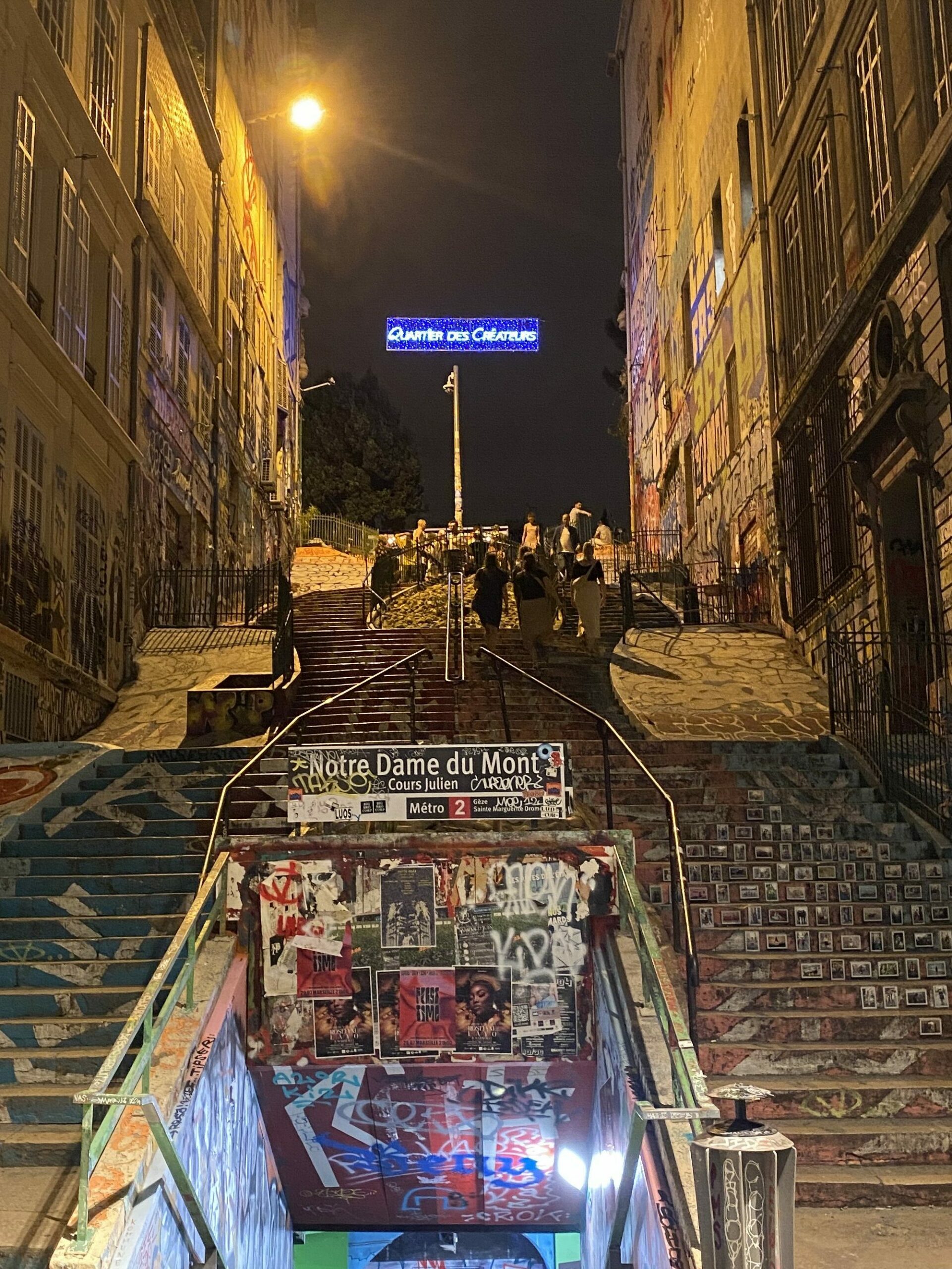
Walking networks in cities and settlements around the world would have so many benefits both to communities and travellers alike. It would enable learning — foster truer and deeper connections — connections that are less transient and more lasting.
Maybe we walk to encounter and to experience these collisions — to witness, to survive, to feel
One afternoon I went to see the Connectivities exhibition at the Mucem. This exhibition showed expanding cities as ‘places where influxes, connections trade and therefore power converge and intensify.’ As part of the exhibition there was a film being screened. In it, the camera pans across various city streets around Europe. As the viewer, you see people walk, laugh, connect, fight, haggle. It was hypnotising. I stayed and watched the seemingly unending reel for a very long time. In cities, everything changes and nothing stays the same. Like atoms we’re whizzing through space, though sometimes we collide. Maybe we walk to encounter and to experience these collisions — to witness, to survive, to feel…
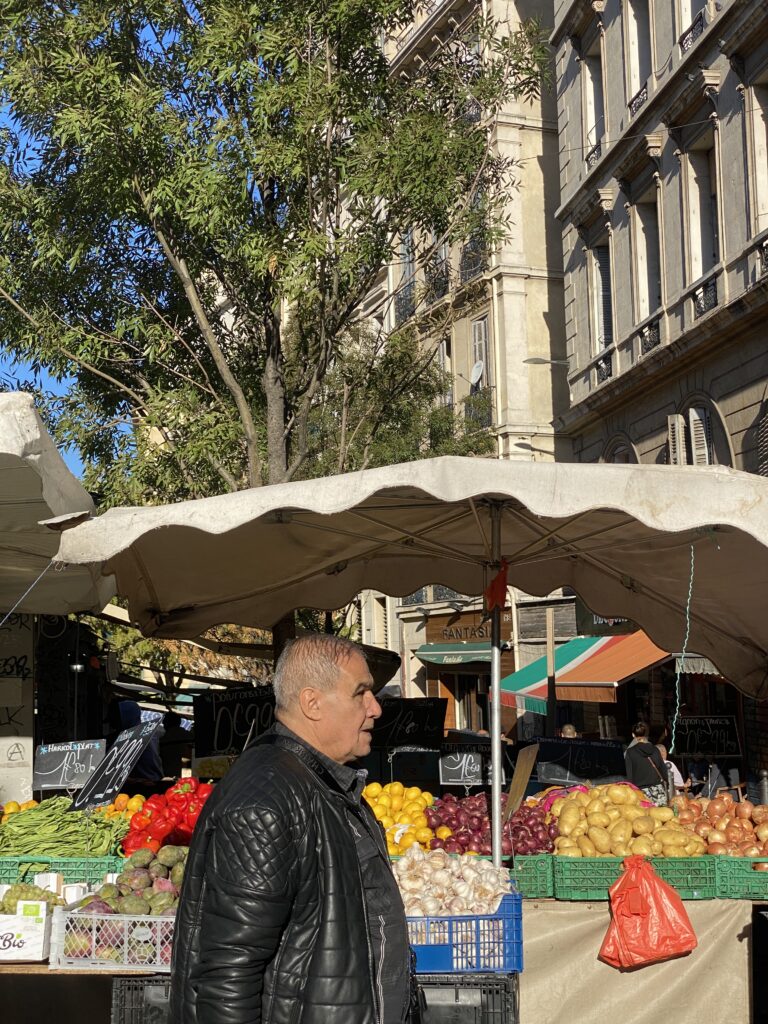
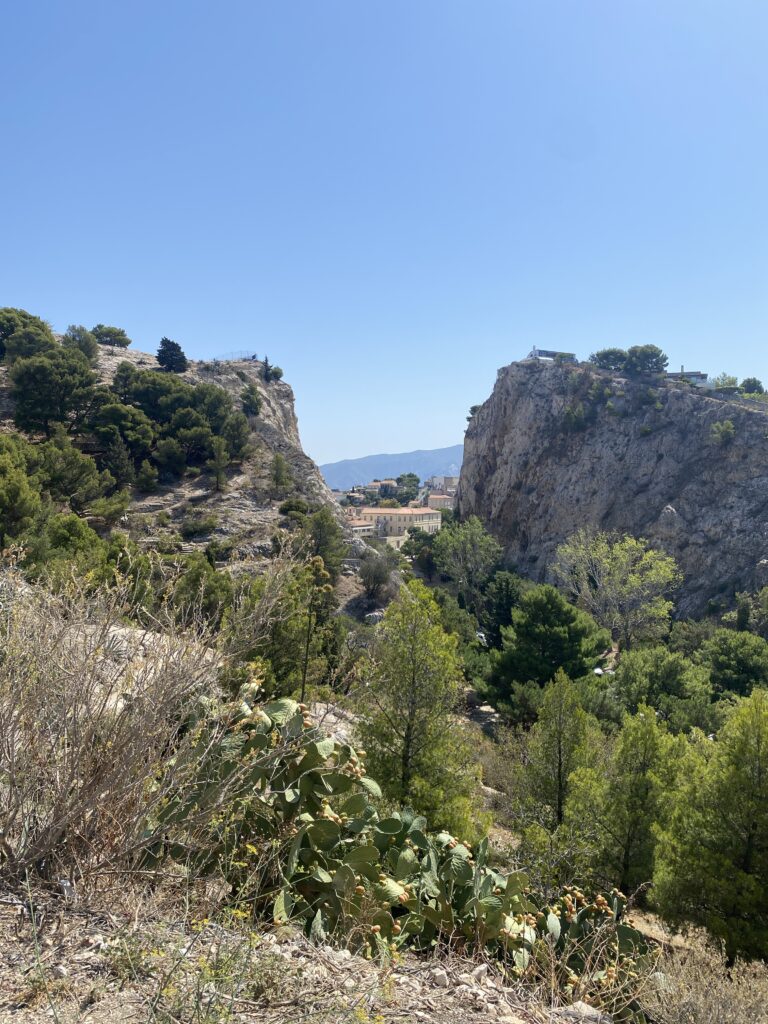
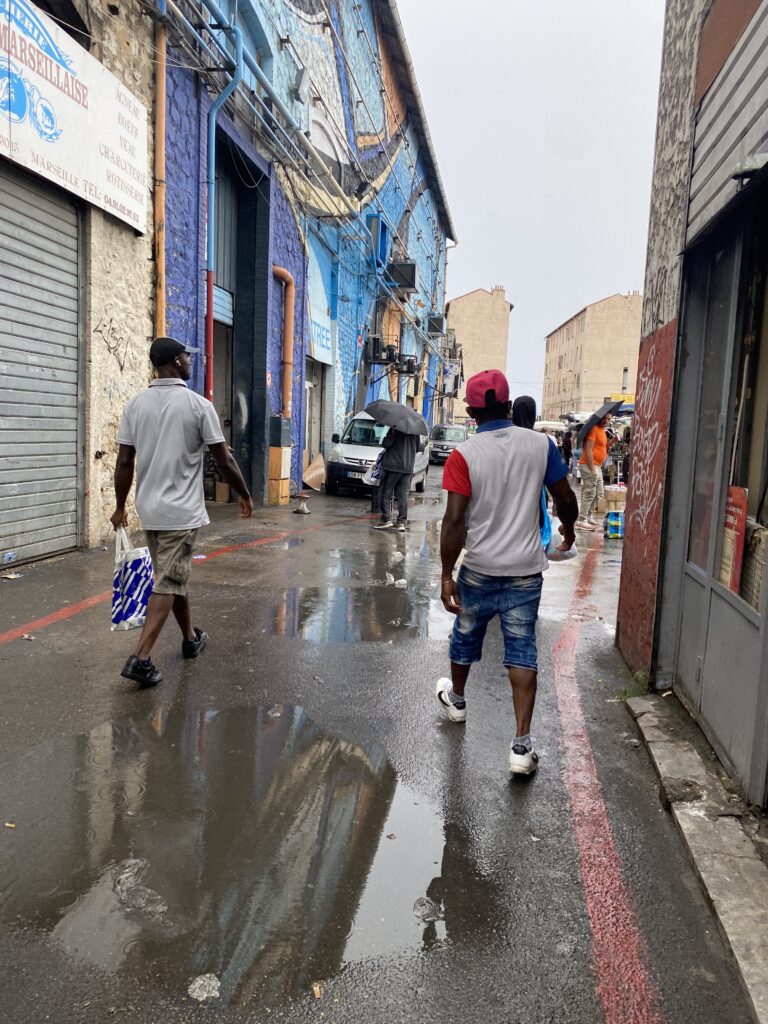
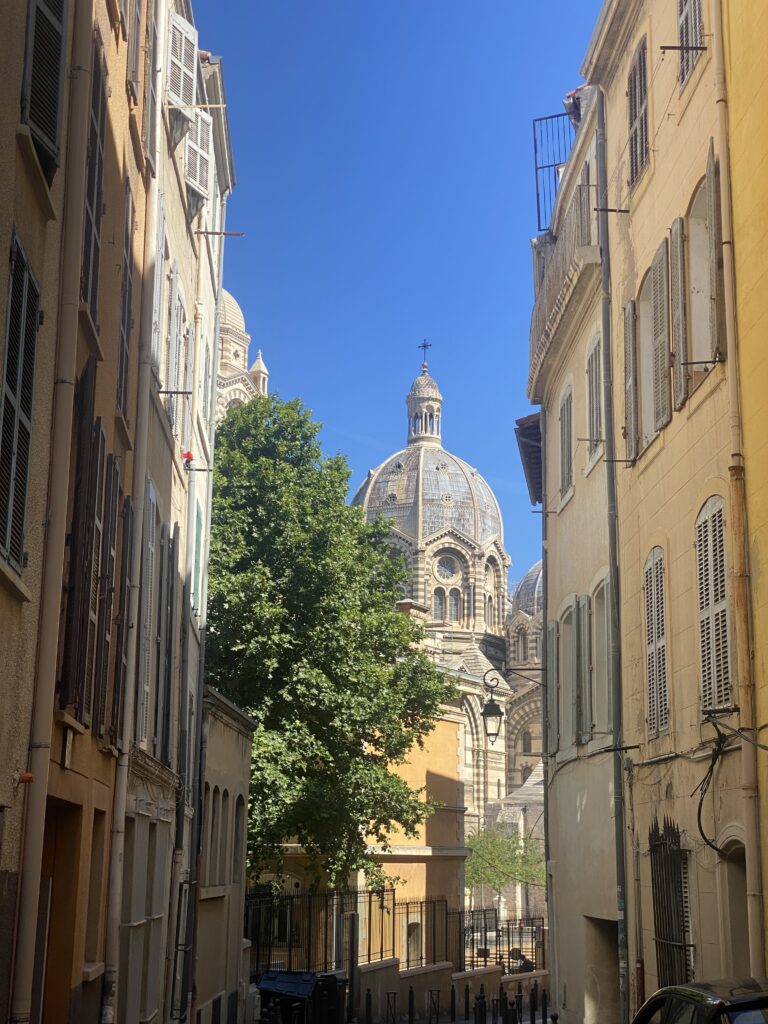
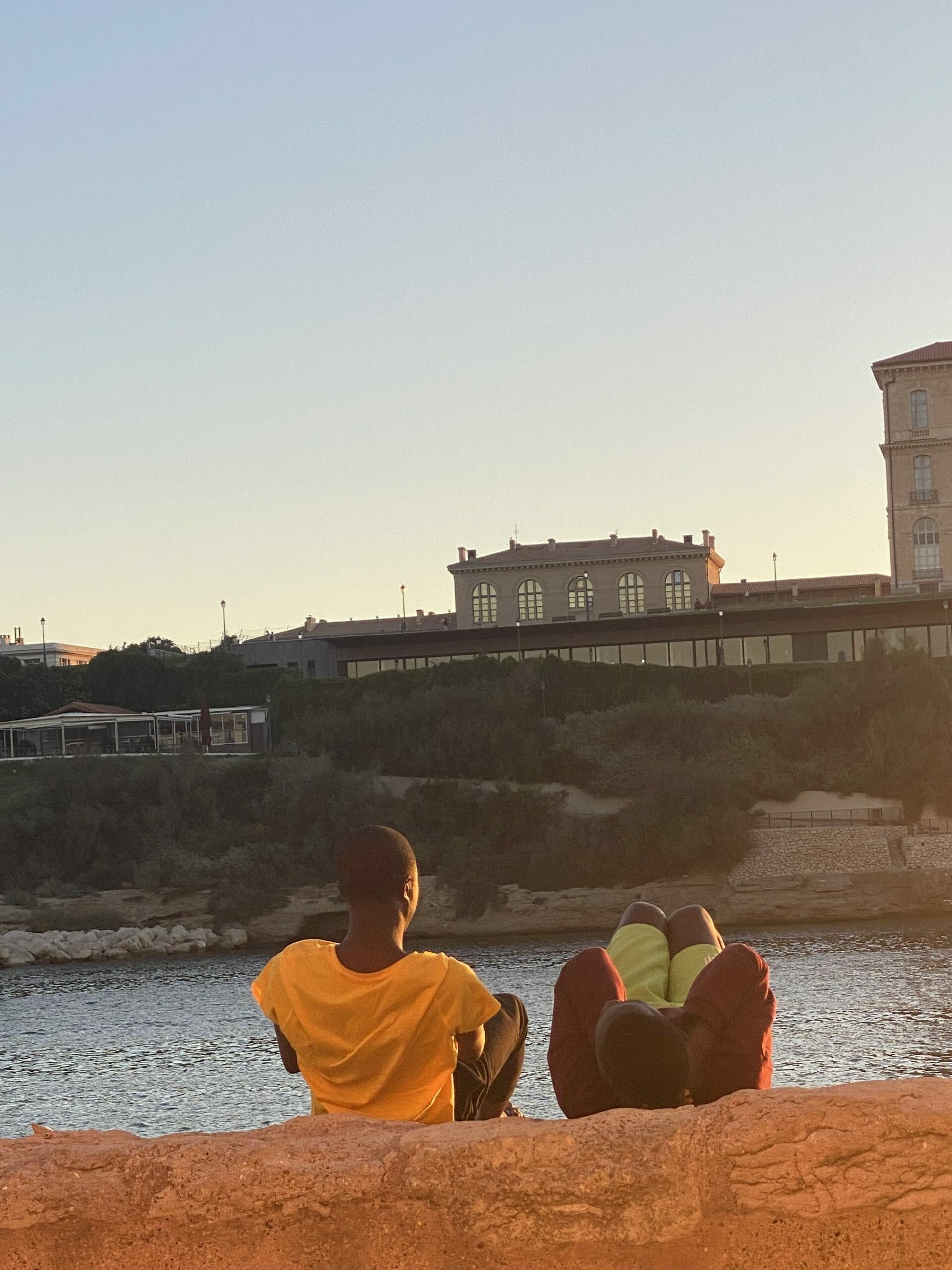
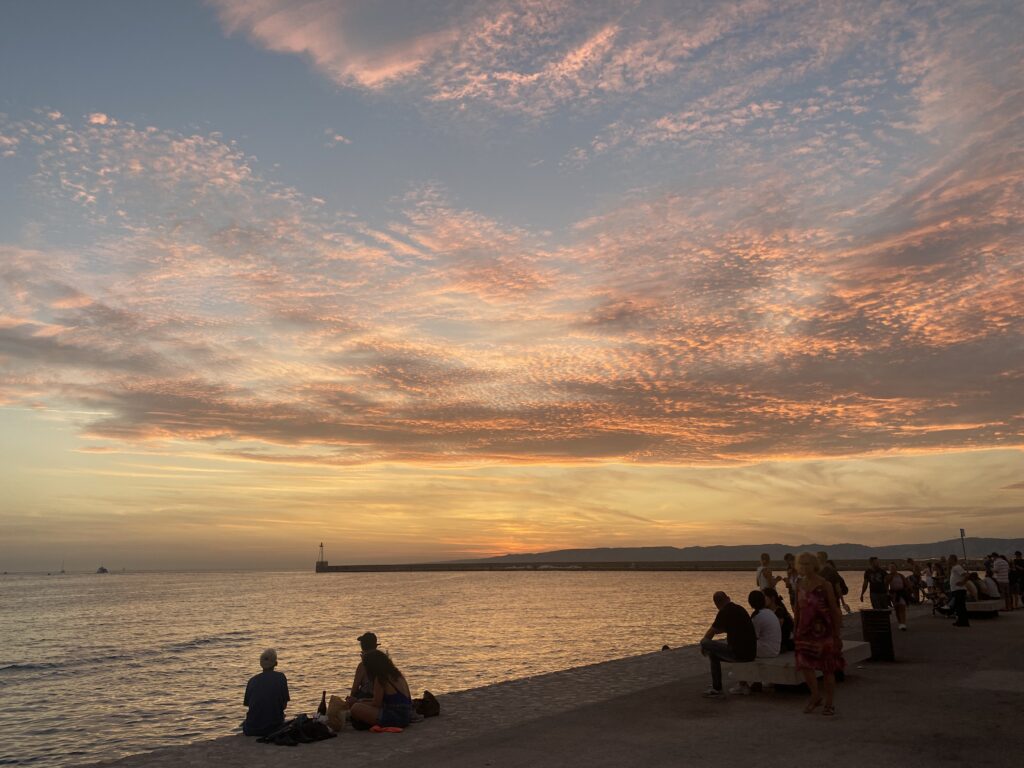
Leaving Slow Ways
My time in Marseille is drawing to an end and so is my time at Slow Ways. Before I left the UK, I changed my number and deactivated my Instagram. I often go through periods of self-imposed isolation; I lean into the solitude (often wildly uncomfortable at first), I learn presence and I (unwillingly) reflect on where I’m going. I’ve never intentionally planned ahead; events, encounters, opportunities — they propel you in certain directions and all you can really do is move forwards. As a result, I feel like I’ve lived out of a suitcase for the last 4 years.
In less than a month’s time, I’m leaving my role at Slow Ways. I’m going back to school to study for an MA in Creative and Life Writing. I’d be lying if I said I wasn’t feeling uncertain, maybe even afraid, not just about studying, but leaving a job that has brought me so much freedom, joy and learning. A job that has brought me connection, friendship, and enabled me to embark on countless adventures and has been intrinsically linked to my purpose and passion.
I feel that Slow Ways has changed me
I will miss working at Slow Ways, but will carry the lessons I’ve learnt wherever I go. To trust each journey, the way we trust routes strangers have drawn out. I’m sure there’ll be obstacles, but equally, I’m confident there will be ways to confront and overcome them. I’ll miss the community; the volunteers, staff, creatives, groups — everyone who has shaped, contributed and enjoyed the network.
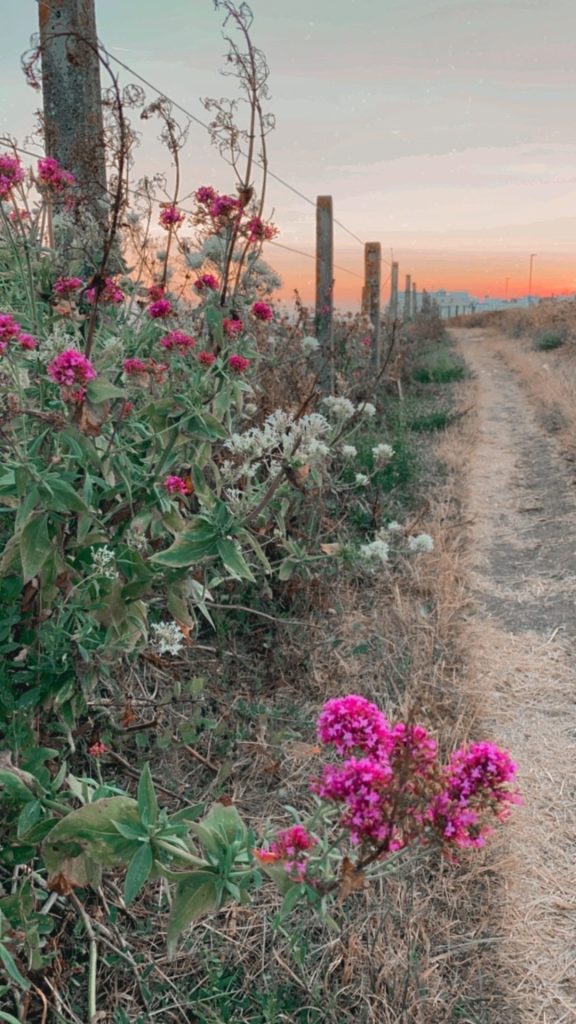
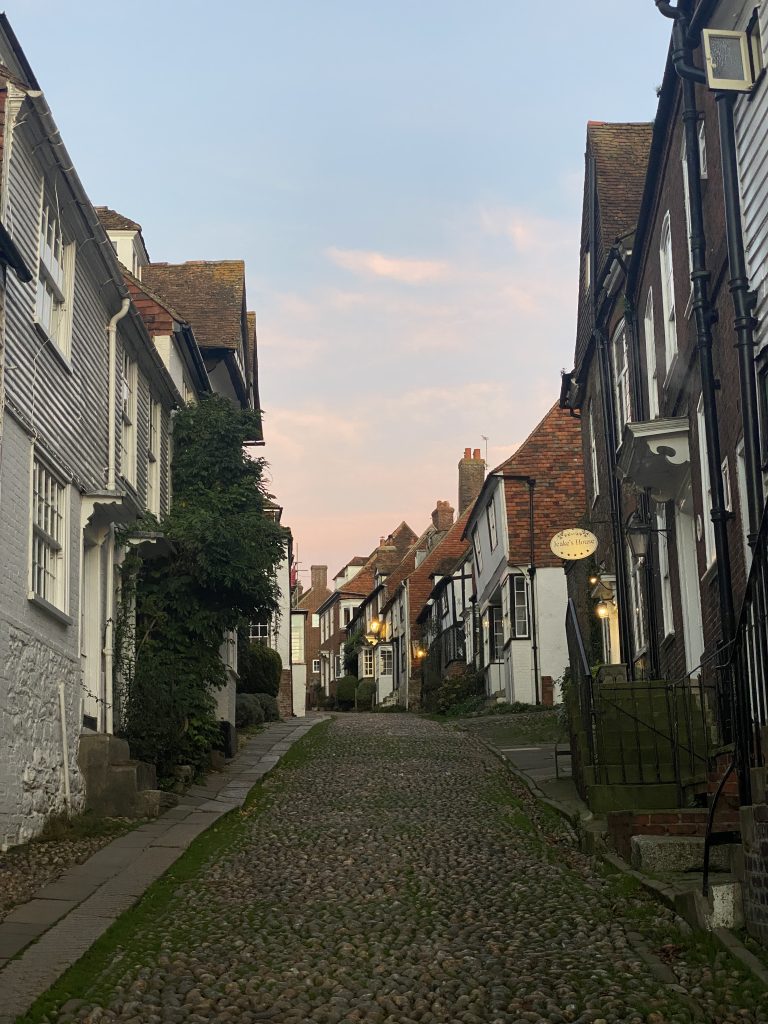
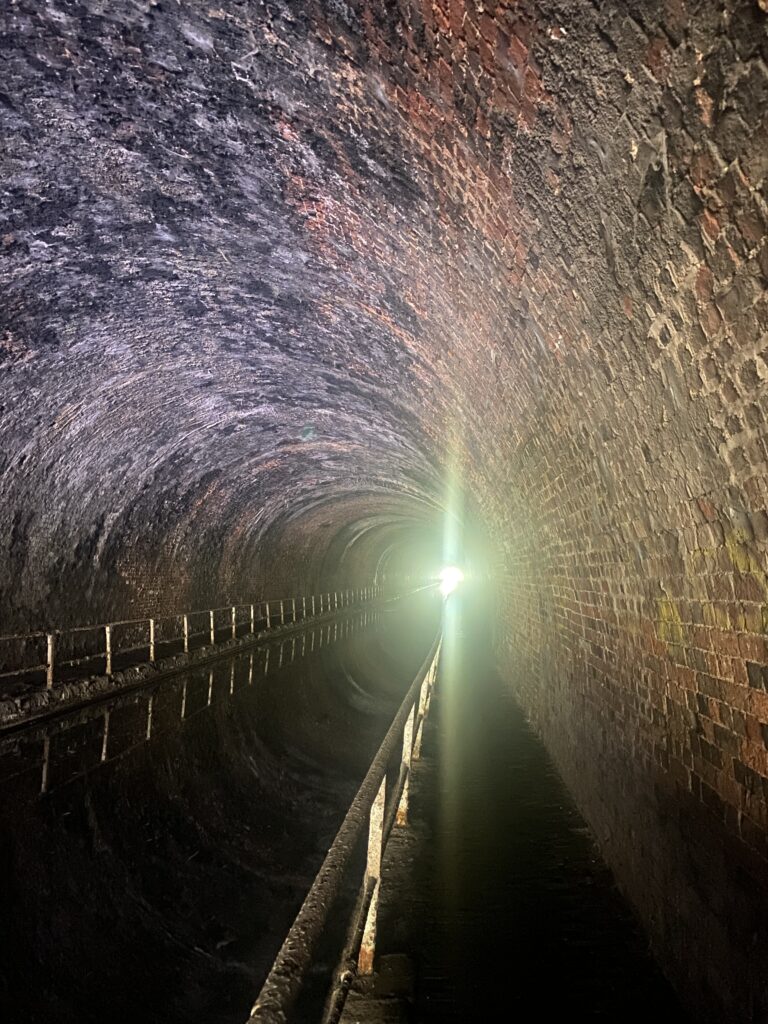
For the last decade, my work has largely revolved around connecting people and places through wanderings and stories. Whilst I hope to continue working in the same vein for many more years to come, I feel that the past two years at Slow Ways has changed me. I’m more empathetic, patient and curious. I feel braver.
I didn’t realise how little I knew about the UK before starting this job. I’ve come to appreciate these wondrous isles, its people and places so much more. From Bradford to Great Yarmouth, I’ve connected with so many incredible people and communities — places with heart. So many things connect us, and there’s much we can do to connect others — we can walk between two places and write about our journeys.
I hope to continue taking the Slow Way at every opportunity and to carry the ethos behind this wondrous project with me wherever I go.
Has Slow Ways changed the way you travel? Do you have a story? We’d love to hear about it! Send us your story – email us at hello@slowways.org. Sign up to walk and review Slow Ways. Follow us on Instagram, Twitter and Facebook!